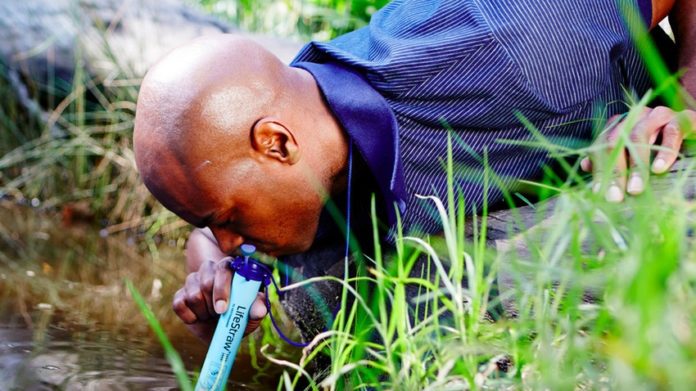5 remarkable inventions improving water quality across the globe

The world’s water crisis is still in full force.
Approximately 750 million people around the world still lack access to safe, drinkable water — 90% of whom live in sub-Saharan Africa and Asia, according to the World Health Organization’s latest statistics.
In addition, a new report from the United Nations warns that global water resources may only meet 60% of the world’s water demands by 2030.
But various entrepreneurs, innovators and organizations are working hard to create devices with the potential to change that number. From the LifeStraw, which allows users to sip water through a simple, straw-shaped filtration tool, to the LUV Water system, which purifies water using weight and gravity, there are various ideas that offer hope in this dire situation.
In honor of World Water Day, we’re highlighting five inventions that use innovative science and technology to help increase global access to clean water.
World Water Day inventions
-

1. WATERisLIFE’s Drinkable Book
The Drinkable Book is a two-in-one resource: It’s a manual filled with safe water tips (offered in a variety of languages and geared toward people who may not know their water is contaminated), that is printed on scientifically advanced filter paper, which kills deadly waterborne diseases.
According to creator WATERisLIFE, each book can provide a user with clean water for up to four years.
Image: WATERisLIFE -
2. LUV Water
Students at the Integrated Innovation Institute at Carnegie Mellon University developed LUV Water, a low-cost, self-powered water purification system that uses the weight of water to rotate a motor, powering UV-LED lights. These lights kill 99.9% of waterborne pathogens, and a coarse particle filter helps maintain the device’s efficiency.
The team of engineers is also applying the technology to water bottles for a more portable solution.
Video: YouTube, CMU – Integrated Innovation -
3. UTEC’s water-generating billboard
In 2013, the University of Engineering and Technology (UTEC) in Lima, Peru, created #AirHuerta, an innovative advertising campaign and billboard that takes moisture from the humid air, and converts it into filtered drinking water. The billboard can produce up to 26 gallons of water each day, according to Time.
Video: YouTube, LocoTV Dos -
4. Dean Kamen’s Slingshot
Dean Kamen, perhaps best known as the inventor of the Segway and the iBot wheelchair, developed the Slingshot water purification system to save lives worldwide. Using a Stirling engine, the Slingshot boils water, creating steam, and then compresses it to turn it back into pure, distilled water. The concept mimics the way the sun evaporates rain water.
In 2011, Coca-Cola and Kamen’s company, DEKA Research and Development, sent 15 Slingshots to five schools in Ghana for trials over six months. According to Popular Science, the partners announced a goal in 2013 to place up to 2,000 units around Africa, Asia and Latin America by the end of 2015.
Video: YouTube, General Electric -

5. LifeStraw
LifeStraw, part of international health company Vestergaard, has a line of award-winning, innovative products that allow people to filter water anywhere. The well-known classic LifeStraw, which looks like a thick straw, uses advanced hollow fiber technology to filter water, allowing users to simply suck water through it. Other products include the LifeStraw Go water bottle and the LifeStraw Family high-volume water purifier (pictured at the top of this post).
Image: LifeStraw -
BONUS: Flush
This invention doesn’t increase access to potable water, but it’s worth mentioning for its ability to help users save water with very little effort.
Engineering students at The Cooper Union college in New York City created Flush, a dual-flush toilet retrofit kit that easily converts your typical single-flush toilet to a toilet that allows users to choose a full flush or a partial flush. The concept was made to help people decrease their water consumption.
“The rest of the world is already using dual-flush toilets,” one of the creators told Live Science. “America seems to be one of last developed countries to step up to the plate and save water.”
Video: YouTube, Alan Wolf
Have something to add to this story? Share it in the comments.
